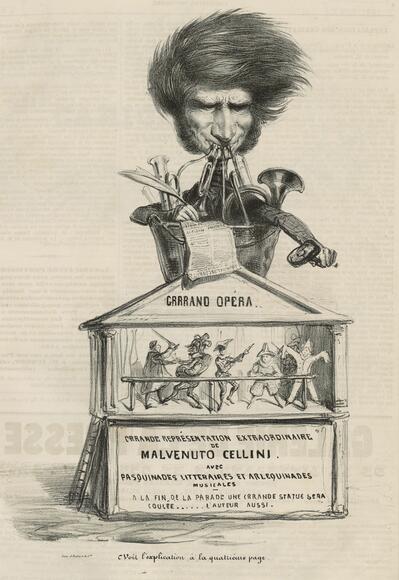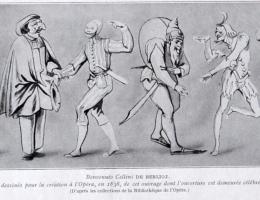Benvenuto Cellini

Opéra en 3 actes créé à l'Académie royale de musique.
First published in 1728, Benvenuto Cellini’s Vita captivated Romantic Europe. The Florentine goldsmith was seen as a modern-day hero, embodying creative freedom, seen as being above the law. But when Berlioz made it the subject of his first opera, composed in 1836-37 to a libretto by Léon de Wailly and Auguste Barbier (with the collaboration of Alfred de Vigny), he shifted the action from Florence to Rome and changed the commissioner of the statue of Perseus from Cosimo I de’ Medici to Pope Clement VII, then, to meet the requirements of the censors (the supreme pontiff’s presence on stage was not admissible), to Cardinal Salviati. The libretto, at first intended for the Opéra-Comique, was refused by the latter, so Berlioz offered it, in a reworked form, as an opera semiseria, to the Paris Opéra, where Benvenuto Cellini received its first performance on 10 September 1838. It was a “resounding failure”, as Berlioz himself admitted. Even during rehearsals he had had to make many last-minute changes. Fourteen years later he revised the score again for a new production in Weimar in November 1852, conducted by Liszt. The work is rhythmically very complex and technically very challenging, which in Paris had posed serious difficulties. Gilbert Duprez, the star of the Opéra, who took the title role, withdrew after the third performance, which led to the cancellation of the following dates; furthermore, the performance undoubtedly suffered from unfortunate approximations. Some factors had baffled the audience: the semiseria aspect, the mixture of spectacular tableaux more characteristic of grand opera (the Carnival celebrations, the casting of the statue) and light-hearted (even burlesque) scenes in the spirit of opéra-comique. On opera stages of that time such an explosive combination was unknown.




